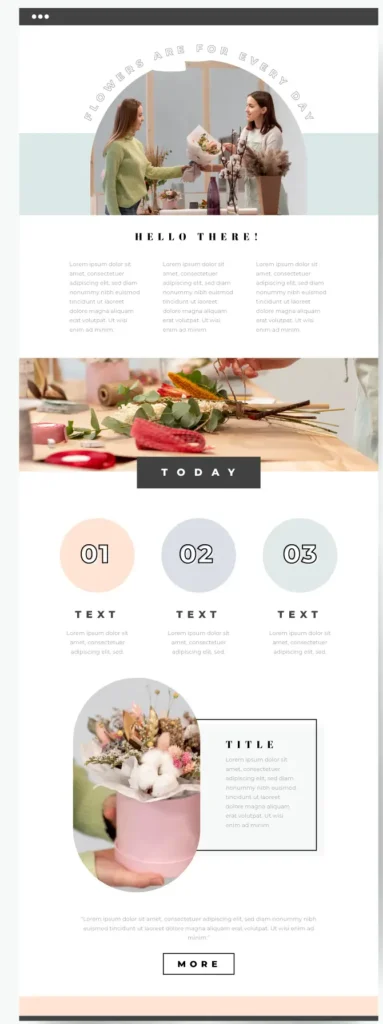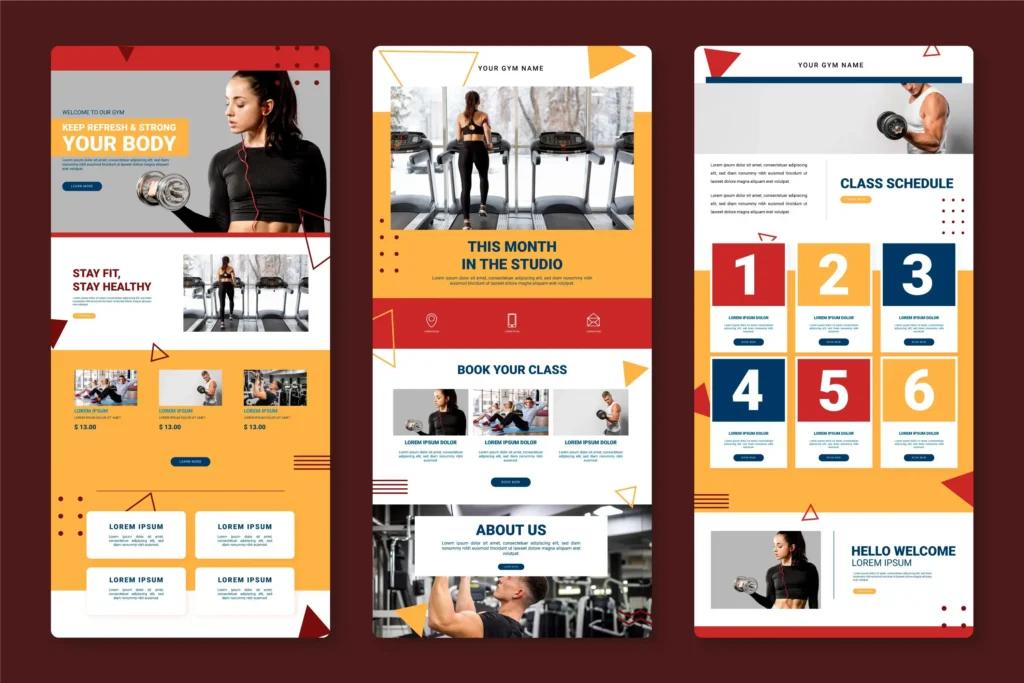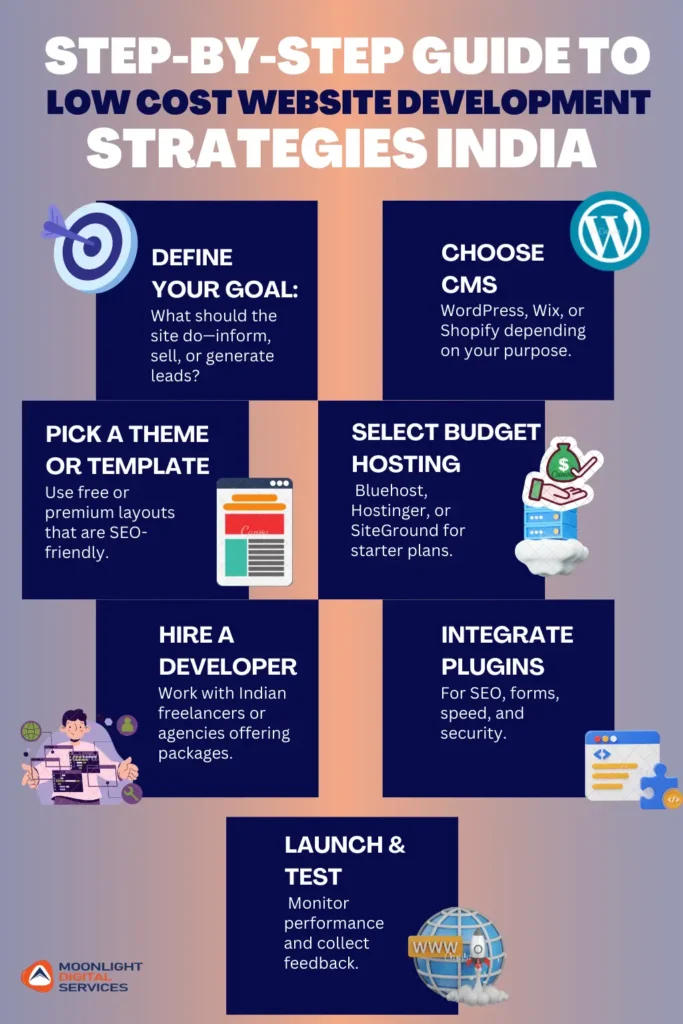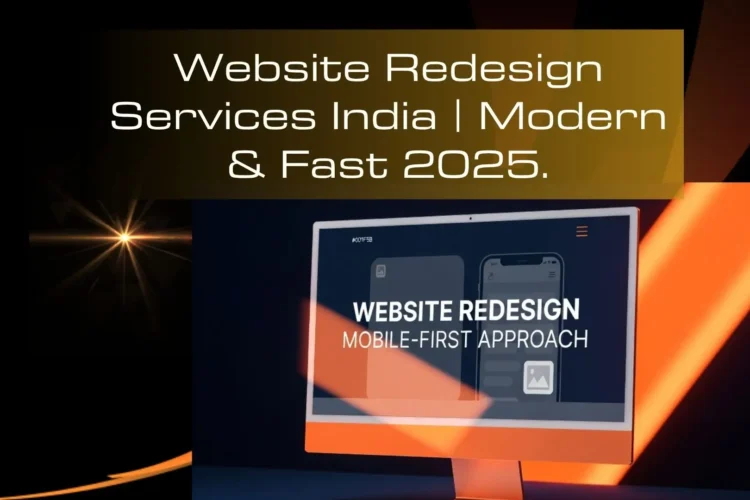
Big Dreams, Small Budget? Here’s How Indian Startups Are Winning the Web Design Game!
For startups, the first step to success is going online—and doing it smartly. That’s where affordable web design India comes into play. Startups with lean budgets no longer need to compromise on quality or functionality. Instead, they can tap into India’s creative and budget-friendly web development scene to create impactful websites that scale with their growth.
In this guide, we’ll break down how startups can get professional websites without draining their budget. From cost-effective tools to tips on scaling your site as your business grows, this is your go-to playbook.
Why Startups Need Smart, Affordable Web Design in India
India is now a go-to destination for startups and small businesses seeking high-quality yet affordable web design services. The combination of skilled professionals, competitive pricing, and flexible packages makes affordable web design India an excellent option for businesses with limited budgets. Let’s look at what makes this possible:
- Rapidly growing developer community across Pune, Bangalore, Delhi, and smaller towns
- Cost advantage compared to Western markets
- Local understanding of user behavior and design expectations
If you’re looking to make a digital impact from day one, working with professionals offering affordable web design India is a solid choice.
Exploring the Scope of Affordable Web Design India
Many startups think low budget means low value—that’s a myth. In truth, affordable web design India can deliver professional, scalable websites packed with essential features.
Here’s what you can expect even in a budget-friendly package:
Responsive and Mobile-Friendly Layouts
With most users browsing on mobile, responsiveness is a must. Indian developers ensure your site looks and works great on all screen sizes.
Example: A boutique in Delhi gets a clean, mobile-ready site that works smoothly on smartphones and tablets.
SEO-Ready Structure
Even budget websites can be built with SEO in mind—clean URLs, optimized meta tags, and fast load times help your site rank better.
Example: A home service startup benefits from basic SEO setup, helping them appear in local search results.
CMS-Powered (like WordPress)
Using CMS platforms allows startups to update content easily without technical help.
Example: An education portal in Pune edits courses and blogs using a simple WordPress dashboard.
Essential Plugins Included
Affordable packages often include key plugins for speed, security, and backups.
Example: A small clinic site with cache plugins and daily backups runs smoothly with minimal downtime.
Custom UI/UX Options
Even on a budget, you can get simple customizations—like icons, brand colors, or layout tweaks—to reflect your brand identity.
Example: A kids’ eLearning site uses playful visuals and colors for a fun, brand-aligned look.
Scalable and Well-Planned
A clear project plan means your site can grow with your business—start simple, expand later.
Example: A bakery begins with basic pages, later adds blog and online order features without redesigning the whole site.
Bonus: Smart Inclusions Even in Low-Cost Plans
Many Indian agencies include bonus features in their low cost website development India packages to stay competitive:
- WhatsApp chat integration for direct customer queries
- Google Maps embed for location-based businesses
- Social media buttons to grow visibility
- GDPR cookie notice (especially helpful for startups targeting global users)
These small add-ons can boost user trust, engagement, and functionality without adding much to the cost.
Ready to take your startup online without overspending?
Let our team design your startup website smartly.
Types of Budget Websites Available for Startups
Startups in India have several cost-effective website options that deliver functionality without stretching the budget. These choices are designed to get businesses online quickly while allowing room for future enhancements.
Informational Sites

Informational Sites are simple, clean, and content-focused websites designed to showcase your startup’s mission, team, services, and contact info. Ideal for early-stage ventures, solo founders, or bootstrapped startups needing an affordable online presence. These sites focus on clarity, fast loading, mobile responsiveness, and a professional look. Perfect for consultants, SaaS MVPs, local services, or any startup looking to build trust without complex features.
Single-Page Websites

Ideal for startups that need a digital presence fast. These sites showcase key information like services, contact details, and a short brand intro—all on one scrollable page.
Example: A freelance graphic designer or local café just starting out can benefit from a clean, one-page site.
Brochure Websites

Perfect for small businesses needing a simple site with multiple pages—Home, About Us, Services, Contact. They’re affordable and professional.
Think of it as your digital business card with more room to describe your offerings.
E-commerce Websites

Start selling products from day one with user-friendly platforms like WooCommerce or Shopify, designed for scalability and ease of use. These websites feature intuitive layouts, secure payment gateways, mobile responsiveness, and customizable designs to reflect your brand. Ideal for product-based startups, local retailers, or niche businesses like fashion, electronics, handmade crafts, or organic products. A great choice for entrepreneurs aiming to tap into online sales quickly and affordably.
Portfolio Websites

Portfolio Websites are visually-driven, minimalistic websites tailored to showcase creative work—ideal for freelancers, designers, photographers, writers, and artists. These sites focus on clean, image-heavy layouts with easy navigation, allowing visitors to explore projects and contact the owner effortlessly. Startups in design, media, photography, content creation, architecture, and even personal branding can benefit from portfolio websites to build trust and attract clients or collaborators.
Landing Pages

Landing Pages are single-focus web pages designed to drive a specific action—like capturing leads or promoting a new product launch. Ideal for ad campaigns, limited-time offers, or niche audiences, they minimize distractions to boost conversions. When opting for affordable landing page design, focus on clarity, mobile responsiveness, compelling CTAs, and fast loading speed to ensure effectiveness without breaking the bank.
Not Sure Which Web Design Style is Right for Your Business?
Let’s Chat and Discover the Perfect Fit – Schedule Your Free Consultation Today!
Web Design for Startups India – Key Features That Matter
1. Responsive and Mobile-Friendly Design
With mobile traffic increasing daily, having a responsive website is non-negotiable. Websites need to be optimized for various screen sizes and devices, ensuring seamless user experiences across smartphones, tablets, and desktops.
2. SEO-Ready Structure
An SEO-optimized website ensures that your startup ranks higher in search results. By integrating SEO-friendly URL structures, meta tags, and content formatting, your website can attract organic traffic, boosting visibility.
3. Easy-to-Use Content Management System (CMS)
CMS platforms like WordPress offer flexibility and ease of use. Startups benefit from the ability to update and manage content effortlessly, without relying on developers for every change. This also reduces ongoing maintenance costs.
4. Fast Loading Speed
A fast website directly impacts user experience and SEO rankings. Optimizing images, leveraging caching, and choosing reliable hosting services can make your site load quickly, reducing bounce rates and improving conversion rates.
5. Clear Call-to-Action (CTA) Buttons
Effective CTAs drive conversions. Placing clear and compelling buttons like “Contact Us” or “Request a Quote” on strategic pages increases engagement and leads, making it easier for visitors to take the next step.
6. Scalable and Customizable Layouts
Startups need room to grow. Choosing scalable designs ensures your website can evolve as your business expands, whether it’s adding new product pages, features, or integrations in the future.
7. Security Features
With growing concerns about data privacy, startups must implement basic security measures like SSL certificates, firewalls, and regular backups to ensure the safety of user data and maintain customer trust.
Budget Website Design for Small Business: Customization & Scalability
Many cheap website templates don’t scale. That’s where Indian developers stand out—they deliver flexibility at a fair cost.
1. Customizable Themes and Templates
Even with a tight budget, small businesses can opt for customizable themes and templates that offer professional designs. Platforms like WordPress provide themes that can be tailored to match brand colors, logo, and overall design preferences, ensuring a personalized feel without the high cost.
2. Scalability for Growth
As your small business grows, so should your website. Scalable website designs are built with flexibility in mind, allowing you to add new pages, products, and features like e-commerce integration or booking systems without overhauling the entire site. This adaptability ensures your site evolves alongside your business.
3. Modular Features for Easy Expansion
Modular features allow small businesses to start with a basic website and add on as needed. This could mean integrating additional functionalities such as contact forms, social media widgets, or even advanced analytics, without disrupting the website’s structure.
4. Budget-Friendly Customization Options
For businesses on a budget, customizations can still be achieved through cost-effective options like pre-built plugins, third-party tools, or leveraging open-source platforms. By focusing on key customization areas such as layout, color scheme, and branding, businesses can achieve a distinct identity without breaking the bank.
5. Easy-to-Implement Updates and Changes
Budget websites often use content management systems (CMS) that allow small business owners to make changes themselves. Whether it’s updating product details or tweaking content, the ease of updating ensures your website remains relevant and aligned with your business goals.
This ensures your budget website design for small business isn’t stuck in version 1.0 forever.
Step-by-Step Guide to Low Cost Website Development India

1. Define Your Website Goals and Purpose
The first step in creating a low-cost website is defining its core objectives. Whether it’s to showcase products, generate leads, or provide information, understanding the purpose will help shape your design and functionality choices. For example, a local restaurant may need an online menu and reservation system, while a freelancer might focus on a portfolio site.
2. Choose the Right Platform for Development
Selecting the right platform is essential for both cost-efficiency and scalability. WordPress, for example, is popular for its affordability and flexibility. It offers numerous templates and plugins, which help businesses keep costs low while maintaining professional-quality features. Other options like Wix or Shopify may be suitable for specific business models.
3. Select a Pre-Built Template or Theme
Rather than creating a design from scratch, using a pre-built template or theme can save both time and money. These templates are designed to look professional and are often customizable, which allows businesses to adapt them to their brand identity. Many affordable web design providers in India offer an array of themes tailored to different industries.
4. Plan Your Content Strategy
Before building the website, decide on the type of content you’ll need, such as text, images, videos, and forms. Planning in advance allows for a streamlined content creation process, avoiding unnecessary delays and extra costs. For instance, small businesses can use stock images or user-generated content, which can be more affordable than hiring professional photographers.
5. Implement Essential Features & Functionality
For a budget website, it’s important to prioritize essential features such as mobile responsiveness, SEO optimization, and speed. Platforms like WordPress allow for simple integrations of these features through plugins, such as Yoast SEO for search engine optimization and WP Super Cache for better website speed.
6. Test Your Website for Usability and Performance
Before launching your low-cost website, ensure it’s fully optimized. Check its responsiveness across different devices, verify loading speeds, and test all interactive elements like forms or checkout processes. Tools like Google PageSpeed Insights can help identify areas of improvement without additional costs.
7. Launch and Monitor Your Website’s Performance
Once your website is live, monitor its performance regularly. Use free tools like Google Analytics to track visitor behavior, bounce rates, and conversion rates. This helps you understand how your audience interacts with your website and allows you to make improvements over time to enhance user experience.
SEO Optimization in Budget Web Design
Startups need visibility, and SEO shouldn’t be an afterthought. Even in low cost website development India, SEO can be implemented smartly:
- 1. On-Page SEO for Budget Websites
Utilize tools like Yoast or RankMath to optimize titles, meta descriptions, and headers for improved SEO rankings. - 2. Mobile-Friendly Design
Ensure your website design is mobile-first, optimizing for responsiveness across all devices. - 3. Fast Loading Speed
Compress images and implement caching strategies to enhance page speed and provide a smoother user experience. - 4. Quality Content Strategy
Optimize content with proper keyword research and ensure all on-page elements align with SEO best practices. - 5. Use Schema Markups
Incorporate schema markup to help search engines understand your content better, improving search visibility and click-through rates. - 6. Local SEO for Increased Visibility
Incorporate location-based keywords and register on Google My Business to boost local search rankings.
Performance Metrics You Should Track from Day One
Web performance influences everything from user experience to Google rankings. Here are the metrics to monitor:
- Page Load Time (Aim under 3 seconds)
- Bounce Rate (Keep below 50%)
- Mobile Responsiveness
- Conversion Rate
- Core Web Vitals (Largest Contentful Paint, First Input Delay)
Tools & Resources to Make Website Building Affordable
You don’t have to start from scratch. Use these tools to save cost and time:
- Canva: For banners and graphics
- Elementor or WPBakery: Easy drag-and-drop website builders
- Unsplash/Pixabay: Royalty-free image libraries
- Google Fonts: Use clean, readable typefaces for free
- Mailchimp: Start email campaigns for free
Want us to take care of all this for you?
Let’s build your startup website together.
FAQ
What is the average cost for affordable web design India services?
Typically, startup-friendly websites can range from ₹10,000 to ₹35,000 depending on features and complexity.
Can I scale my budget website later as my business grows?
Yes, most affordable sites are built on CMS platforms like WordPress that allow easy upgrades and feature additions.
Are SEO and mobile optimization included in low cost website development India?
Reputed developers ensure SEO-ready structures and mobile responsiveness, even in budget packages.
Is it better to use a website builder or hire a professional developer in India?
Website builders are quick but limited. A professional gives you control, flexibility, and growth potential.
How long does it take to build a budget website for a small business?
Typically 5–10 working days depending on requirements and approvals.




